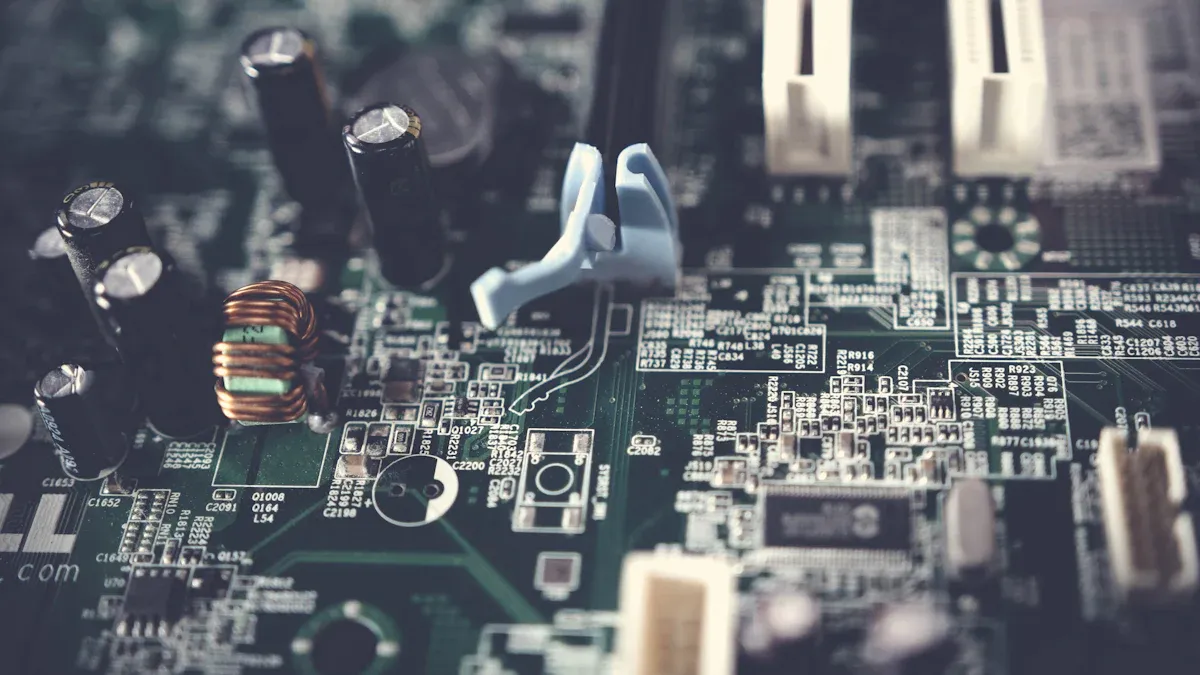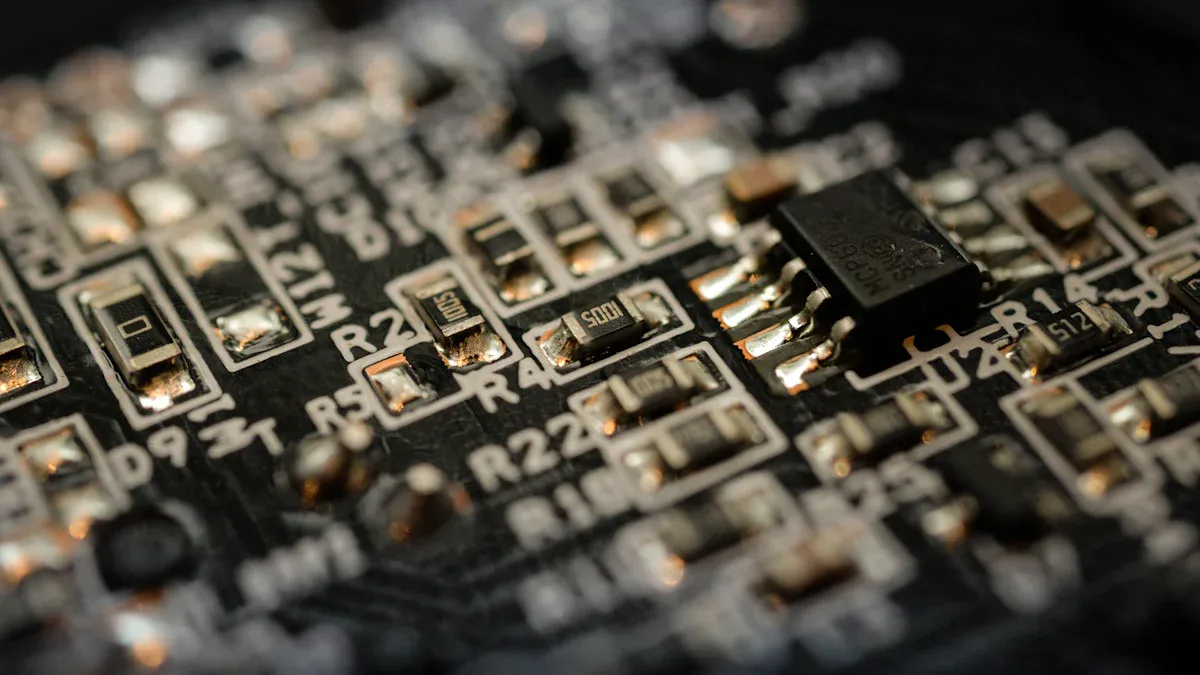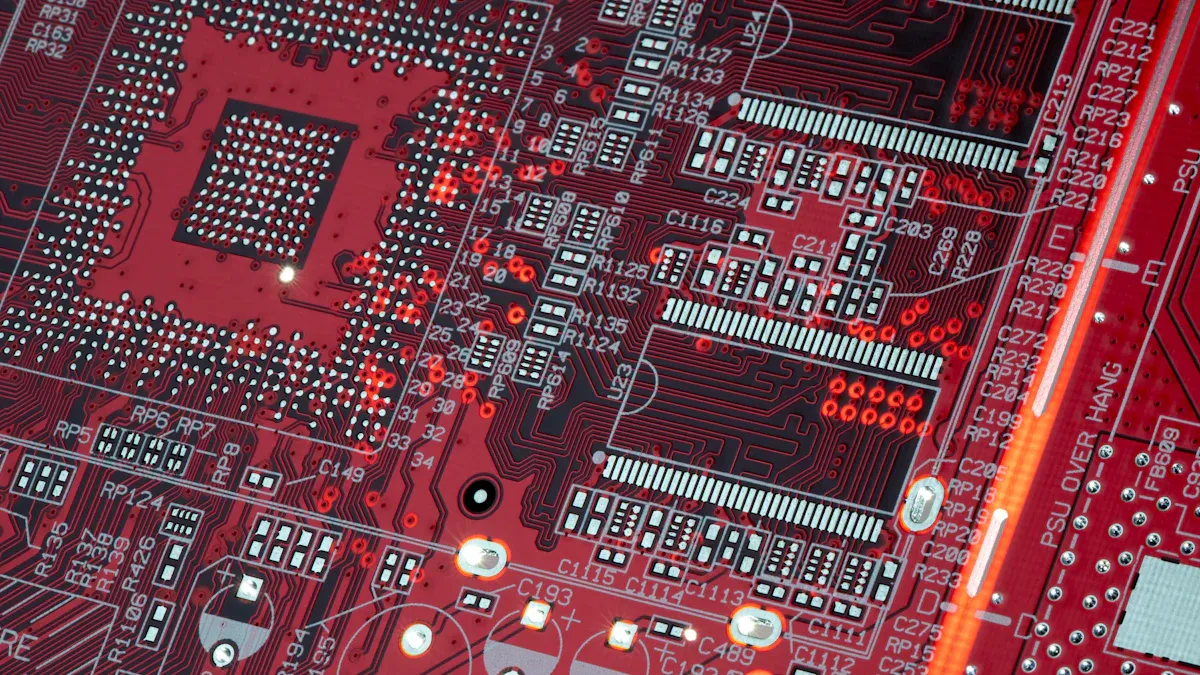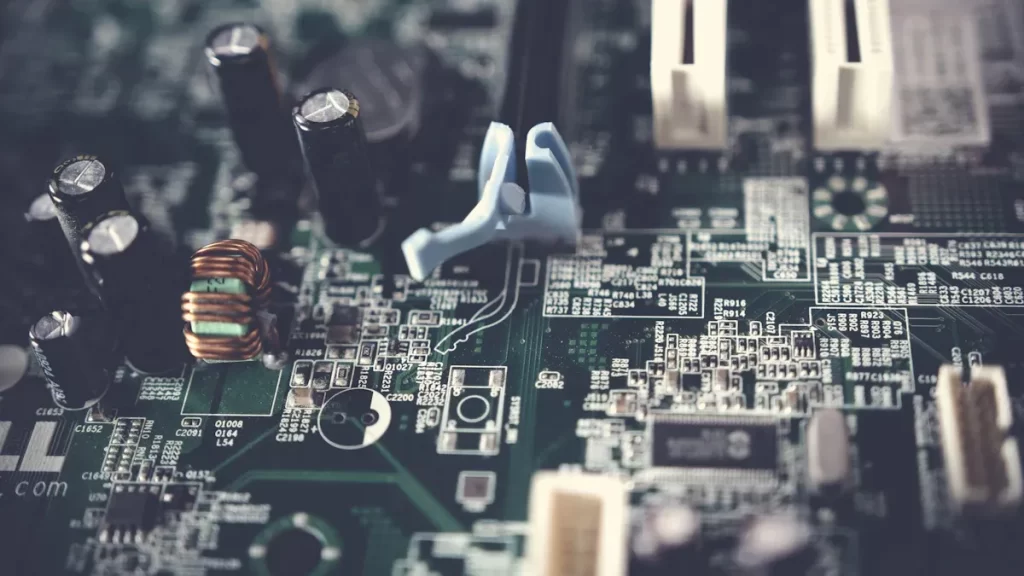
Electro-Magnetic Interference (EMI) shielding is essential for stopping harmful electromagnetic waves, acting like a wall that blocks disruptive signals. These signals can interfere with the delicate components of electronic systems. In the context of EMI shielded industrial automation PCBA, this shielding ensures that systems operate without errors caused by external or internal interference.
Smooth operation is crucial in factories. Without effective EMI shielding, your systems may experience interruptions or failures, leading to delays and potential safety issues. Utilizing EMI shielded industrial automation PCBA enhances system stability and extends their lifespan.
Key Takeaways
EMI shielding stops harmful electromagnetic waves, keeping machines working well.
Materials like copper and aluminum make shielding stronger and systems better.
Good design and placing equipment right can lower EMI problems in factories.
Following EMI shielding rules helps meet standards and shows systems are reliable.
Checking and fixing EMI shielding often is key for safety and good performance.
Understanding Electro-Magnetic Interference (EMI)

What is EMI and its impact on electronic systems
Electro-Magnetic Interference (EMI) happens when electromagnetic waves disturb electronics. These waves can come from nature or human-made devices. EMI can cause data errors, system breakdowns, or even total failure. For example, in space, solar flares or cosmic rays can harm spacecraft systems. This shows why stopping EMI is so important.
In factories, EMI can mess up equipment accuracy and stability. It can block communication between devices, causing errors or delays. Stopping EMI is key to keeping systems reliable and working properly.
Common sources of EMI in industrial automation environments
In factories, EMI can come from many places. Common sources include:
Electrical equipment: Machines like motors and transformers create electromagnetic fields that disturb systems.
Communication systems: Wireless networks and radios can send signals that overlap and interfere.
Environmental factors: Lightning, solar activity, and some building materials can add to EMI.
Proximity of equipment: Devices placed too close together can increase interference. For example, keeping 8 meters between train tracks can stop EMI from passing trains.
To reduce EMI, place equipment carefully, use shielding, and choose better communication methods like CBTC DSSS waveguide or PIS LTE.
Findings | Recommendations |
|---|---|
Keep 8 meters or more between train tracks to avoid EMI. | Maintain at least 8 meters between tracks. |
Don’t let two systems share the same frequency band. | Avoid overlapping frequency bands. |
Field strength affects EMI more than weather or materials. | Focus on managing field strength. |
CBTC DSSS waveguide and PIS LTE modes work best. | Use these preferred communication methods. |
Challenges posed by EMI in industrial automation PCBA
EMI creates problems for industrial automation PCBA. It can lower performance and cause more downtime. Key problems include:
System reliability: EMI can make systems fail unexpectedly.
Safety risks: Errors in safety systems can harm workers or machines.
Compliance issues: Many industries require meeting EMC rules. Ignoring EMI can lead to fines or restrictions.
Using EMI shielding, like special films or coatings, can solve these problems. This keeps systems running smoothly and parts lasting longer.
The Importance of EMI Shielding in Industrial Automation PCBA
How EMI shielding ensures system reliability and safety
EMI shielding helps keep industrial systems working properly. It blocks harmful electromagnetic waves that can disrupt sensitive parts in PCBs. This is especially useful in places with machines and communication tools that create interference. Without shielding, these disturbances can cause systems to fail or make mistakes.
For example, shielding protects signals by keeping wires and parts safe from noise. This reduces the chance of data errors and helps systems work as they should. Materials like EMI shielding film also make PCBs stronger, helping them last longer and lowering repair costs.
In important systems, like those in factories or transportation, safety depends on reliable performance. EMI shielding improves system stability, which makes operations safer. It also helps meet worldwide rules for electromagnetic compatibility, ensuring systems stay dependable and follow regulations.
Role of EMI shielding in minimizing interference and enhancing performance
Electromagnetic interference can weaken how well industrial systems work. EMI shielding fixes this by creating a barrier that stops waves from reaching sensitive circuits. The success of shielding depends on things like material type, thickness, and design.
Principle | Description |
|---|---|
Conductivity | Better conductivity means stronger shielding against interference. |
Magnetic Permeability | Materials with good magnetic properties block electromagnetic fields better. |
Thickness | Thicker materials shield better, but thin ones like aluminum foil can still work. |
Connection Method | Good design prevents gaps that can weaken shielding. |
Opening Size | Smaller openings in shields stop interference, especially at high frequencies. |
Filter Functionality | Filters block unwanted noise while letting needed signals pass through. |
Frequency Range | High-frequency noise is often blocked using low-pass filters. |
By focusing on these factors, EMI shielding keeps systems running well, even in tough environments. For example, telecom companies use advanced shielding to support 5G networks. This prevents interference and ensures smooth communication.
Compliance with electromagnetic compatibility (EMC) standards
Industrial systems must meet EMC standards to work without causing or facing interference. EMI shielding is key to meeting these rules.
Designing products with EMC in mind is very important. This includes using shielding materials to block interference and testing systems carefully. Companies often use special labs to check if their products meet EMC standards. For instance, car makers use shielding to protect parts in electric vehicles, ensuring they follow rules and work reliably.
EMC testing isn’t just about following laws. It also makes sure systems are safe and dependable. Adding EMI shielding to PCBs helps systems resist interference and perform consistently. This not only meets industry rules but also builds trust in the system’s reliability.
Methods and Materials for EMI Shielding

Common techniques for EMI shielding in PCBA
To protect PCBA from harmful electromagnetic waves, engineers use various methods. These techniques block, absorb, or redirect noise that can harm systems. Some common methods include:
Shielding cans: Metal covers placed over parts to block emissions.
Ground planes: Layers in the PCB that lower noise and stabilize signals.
Conductive coatings: Thin materials applied to reflect or absorb interference.
Filtering components: Parts like capacitors near power pins to reduce noise.
Multi-layer PCBs: Boards with extra layers for better EMI protection.
Studies show shielding films work as well as copper planes. They are 50% more flexible and cut costs by 25%, making them great for flexible circuit designs.
Materials used for EMI shielding, including metals and conductive coatings
Choosing the right materials is key for effective EMI shielding. Metals and coatings are popular because of their special properties.
Metals: Copper, aluminum, and nickel are common due to high conductivity. Copper is great for high-frequency shielding, while aluminum is lightweight.
Conductive coatings: These include carbon-based materials and metallic paints. They reflect or absorb EMI based on their resistivity. Good coatings have resistivity between 100 and 10^-3 ohm-cm.
Tests like ASTM D4935 check how well these materials shield. Real-world testing ensures they work in actual conditions.
Design considerations for effective EMI shielded industrial automation PCBA
Designing EMI shielded PCBA needs careful planning. Following guidelines helps systems work better. Important tips include:
Use low-impedance ground planes to stabilize signals and reduce noise.
Keep signal loops small to avoid radiation.
Place capacitors near power pins to block high-frequency noise.
Add shielding cans over key parts to block emissions.
Use multi-layer PCBs with power and ground layers for better shielding.
Standards like MIL-STD-461 and IEEE-299 give rules for EMI shielding in factories. These help create systems that meet rules and work well in tough conditions.
Standard/Specification | Description |
|---|---|
MIL-STD-461 | Rules for controlling EMI in devices and systems. |
IEEE-299 | Tests for measuring how well shields block interference. |
MIL-DTL-83528 | Details for conductive gaskets used in EMI shielding. |
By following these steps, you can design strong systems that resist interference and work without problems.
Benefits of EMI Shielding for Industrial Automation
Improved reliability and extended lifespan of components
EMI shielding helps make industrial PCBs more reliable. It blocks unwanted electromagnetic noise, keeping signals clear and steady. This reduces the chance of signal problems that can disrupt systems. Shielding also prevents power issues, helping devices work smoothly.
Using EMI protection keeps sensitive parts safe from interference. This safety improves how well they work and makes them last longer. Proper shielding stops damage caused by electromagnetic waves, ensuring PCBs stay in good condition.
Benefit | Description |
|---|---|
Fewer Jammed or Distorted Signals | Shielding blocks noise, keeping signals clear and steady. |
Reduced Power Fluctuations | It prevents power issues, improving system reliability. |
Increased Lifespan | Shielding protects parts, making them last longer. |
Improved Component Performance | Parts work better with less interference. |
Less Risk of Electrical Shock | Shielding adds safety by lowering shock risks. |
Enhanced safety and uninterrupted operation of systems
EMI shielding makes industrial spaces safer. It reduces interference that can cause machines to fail. This ensures systems keep running without stopping. For example, shielding protects workers from harmful electromagnetic waves. Shielded wires and filters add safety by isolating equipment.
To keep systems running, use EMI filters on cooling devices and machines. Regular checks and maintenance help these systems work well. Grounding and shielding devices stop noise from affecting control systems.
EMC reduces interference, keeping machines safe and reliable.
It protects workers from harmful electromagnetic waves.
Grounding and shielding devices prevent noise problems.
Isolating servers and equipment adds safety.
EMI filters improve safety for servers and devices.
Place cooling systems and devices in proper locations.
Regularly test and maintain EMC systems for best results.
Meeting industry standards and regulatory requirements
Following industry rules is important for industrial PCBs. EMI shielding helps meet these rules by ensuring systems are compatible. For example, marine systems must pass EMI tests to meet IEC and ISO standards. Semiconductor products also need EMI testing to follow EMC rules.
Adding EMI filters and shielded wires to PCBs helps meet these standards. Testing methods like EMI testing confirm systems follow the rules. Meeting these requirements ensures systems are reliable and builds trust in their performance.
Industry | Compliance Requirement | Testing Method |
|---|---|---|
Marine | Must pass EMI tests to meet IEC and ISO standards. | EMI Testing |
Semiconductor | Needs EMI testing to follow EMC rules and ensure compatibility. | EMI Testing |
EMI shielding is important for keeping industrial systems running well. It stops harmful waves from affecting electronics, making them safer and more reliable. Adding shielding to PCBs helps meet rules and makes parts last longer.
Shields stop electromagnetic waves, keeping systems steady.
Copper is a great material because it conducts electricity well.
Good shielding methods make systems work better and break less.
In busy factories, EMI shielding isn’t optional—it’s needed to keep things working smoothly.
FAQ
What is EMI shielding, and why does it matter for industrial PCBA?
EMI shielding stops electromagnetic waves from messing up electronics. It helps industrial PCBA work properly, avoids signal problems, and keeps things safe in areas with lots of electromagnetic activity.
What materials are best for EMI shielding in PCBA?
Metals like copper and aluminum work great because they conduct electricity well. Carbon-based coatings also work effectively. Pick materials based on your system’s needs and frequency range.
How does EMI shielding make systems more reliable?
EMI shielding cuts down noise and interference, keeping signals steady. It protects delicate parts from harm, helping systems last longer and work better. This reduces downtime and repair costs.
Are there rules for EMI shielding in industries?
Yes, rules like MIL-STD-461 and IEEE-299 set standards for EMI shielding. These ensure systems follow EMC rules, improving performance and meeting industry requirements.
Does EMI shielding improve safety in industrial spaces?
Yes! EMI shielding stops interference that could break machines. It keeps workers safe from harmful waves and ensures critical systems keep running without stopping.
See Also
The Impact of PCBA on Today’s Industrial Automation Solutions
Exploring PCBA’s Importance in Industrial Automation Frameworks
Enhancing Industrial Automation Efficiency Through PCBA Technology
Exploring AI Advantages in PCB Assembly Operations
Essential Technologies Shaping PCBA Production for Consumer Electronics





